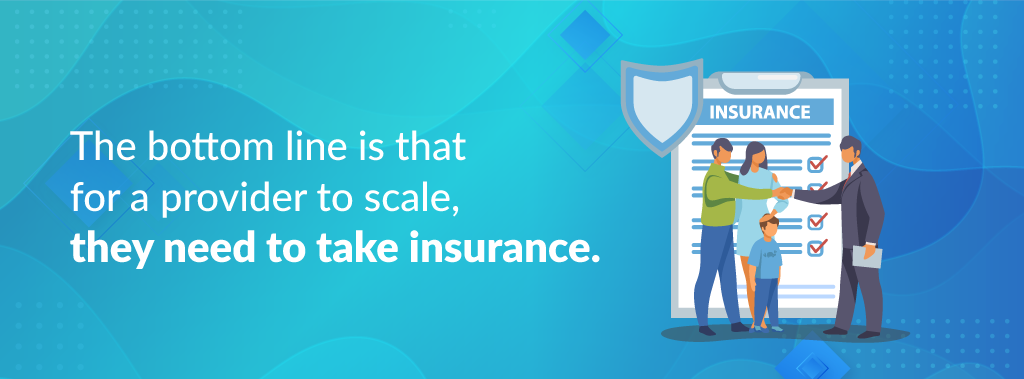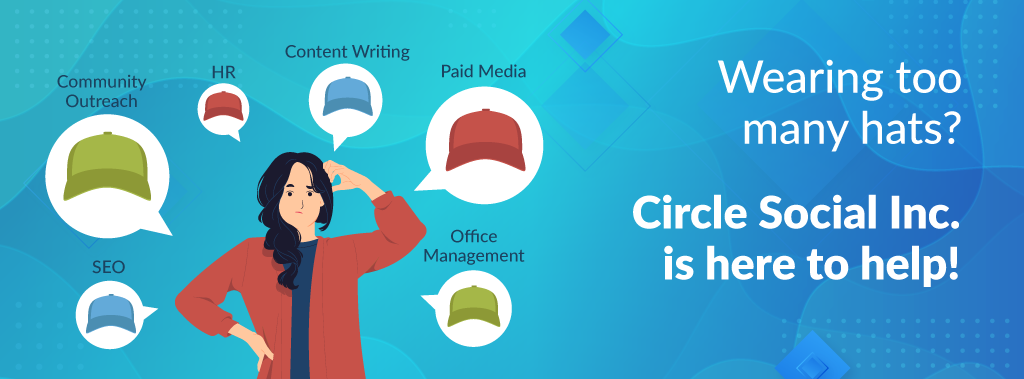It doesn’t matter if you’re a family physician, bariatric surgeon, substance use treatment center, or any other kind of healthcare provider, many providers never get past their first 1-3 locations. The old adage, what got you here won’t get you there definitely applies when trying to grow your practice.
The reality is that more healthcare providers fail than succeed. Just like any other vertical, about 80% of healthcare businesses fail within the first 5 years. Not a day goes by that we don’t hear from or hear of some distressed provider hoping to unload their failing business on some unsuspecting investor. While some get lucky, most end up either selling for pennies on the dollar or end up having to close up shop and file for chapter 11 bankruptcy.
One of the challenges is the other old adage, grow or die. This is very much a reality in much of healthcare. Let’s take a look at some of the challenges facing smaller providers and some tips on how to overcome these obstacles.
The Payers Don’t Care About the Small Guys
This fact is paramount. If you’re in the business of filing for reimbursement, you have no clout or leverage with payers. Insurance billing is expensive and complicated. As a smaller provider, you don’t have the scale to absorb those costs as easily as a larger provider.
Insurance payers are multi-billion dollar businesses and their biggest clients are large employers or the government. They have tens of millions of members. If you’re a small provider seeing a couple hundred patients a year, that has no meaning for them. Even a 100-bed addiction treatment provider seeing just over a thousand patients a year is only a blip on their radar.
So this is the first challenge of being a small provider. Unless you’re seeing thousands of patients a year, the payers are unlikely to take the time to even look at your contracted rates or handle whatever claims issues you’re having. This is why growth is critical for most healthcare providers.
Some smaller providers don’t take insurance for this exact reason. But that’s small-time thinking. The vast majority of the US, even most high-income earners, want to use their insurance whenever possible. Those that can pay out of pocket for healthcare services are less than 10% of the population. Of those 10%, maybe only 2-3% are willing to pay out of pocket rather than use their insurance. So private pay can work in very high-income areas or for hard-to-find, high-end specialized services where people are willing to fly to access the service, but 97% of the US will never use such services while paying out of pocket.
Simply as a result of the very narrow potential patient base, any healthcare provider requiring cash pay will always be restricted by the small size of their total addressable market.
The bottom line is that for a provider to scale, they need to take insurance and they need to grow to the size where they have some leverage with the payers.

You Can’t Compete with Economies of Scale
It’s very easy for larger providers to move into your neighborhood and crowd you out. They have economies of scale in place making it easier for them to handle costs such as billing, marketing, EHRs, and other sizeable expenses that cut deeply into a small providers profitability. From a cost of operations perspective, it will always be easier for a larger provider to succeed since many of their fixed and variable costs are absorbed across multiple locations.
This is why grow or die becomes a reality for many providers. Larger providers are smart. They’re not going to come into a market and pay top dollar to take over someone else’s business when they already have a repeatable strategy for go-to-market success. Instead, they’ll come into your backyard, attract your patients away from you, then possibly buy your practice later at a significantly reduced valuation.
At a certain point, a headquarters is needed that houses much of the backend office and executive teams. This is an investment at first as it will often cut into margins of a provider growing past their first 3 locations, but it quickly becomes a strategic advantage and more than pays for itself as additional locations are added.
Wearing Too Many Hats
Growth requires staff who are really, really good. And nobody is really, really good at a lot of different things. Experts and top talent are always specialists. Just like a heart surgeon can’t walk across the street to another hospital and start doing gastric sleeve surgeries or the ophthalmologist can’t diagnose lower back problems, expertise in any domain requires specialization. Small providers will have one person handling HR, operations, and office management instead of someone in separate roles for each. Or they might try to hire a single person for marketing rather than specialists for community outreach, SEO, paid media, content writing, web development, etc.
While wearing many hats is the requirement of a small business since they simply don’t have the revenue to increase headcount, much less hire top talent, this is another reason for the grow or die mantra. As a smaller provider, are you going to be able to compete against the larger provider working with a marketing agency that assigned a team of 10 specialists to their account? What about the fact that you miss 20% of your new patient calls each day because the person that’s supposed to be answering the phone is also doing paperwork, handling the odd insurance problem, and greeting patients as they come in? Being constantly pulled away from the phone, it’s no surprise that they miss so many calls and, by the time they call back, that patient has already found another provider.

Growth and scale provide the revenue needed to start hiring specialists to get results and drive efficiencies in their respective domains.
So you know specialists are better than generalists, but how do you know who to hire and when? This question is far from simple, but the general rule of thumb is to look at either your greatest bottleneck or greatest opportunity. If your team is missing 20% of the phone calls, it’s reasonable to assume you’re missing 20% of potential new patients. Hiring a part-time receptionist solves the bottleneck, leading to a significant increase in revenue. Or maybe you have enough people covering phones, but there aren’t enough people calling. Then your next hire needs to be community outreach or a marketing agency to start driving more referrals and calls.
Marketing: What Got You Here Won’t Get You There
Many smaller providers rely on a presence and reputation built up in their communities over years and even decades. For this reason, a lot of patients come from referrals. Even for a small destination treatment provider like elective bariatric surgery, it’s possible to operate a single practice through a strong referral network of surgeon contacts and past patient referrals. In this sense, the doctor is the business and, without the doctors contacts and reputation, there is no business.
Neither of these models scale. Once a provider opens up another location outside of the community they’re already known in, they are starting from scratch. There is no existing base of past patients or community referral partners.
For a healthcare provider to grow, they need to have repeatable go-to-market strategies for patient acquisition. This is just as true for destination treatment providers. While a provider might be able to see 10-30 patients a month through referral channels, attracting 50, 100, or more patients a month can’t be achieved through referrals alone.

In both cases, multi-channel marketing strategies are required so that patients are coming in from multiple sources. Some patients search for treatment on Google while some only make decisions based on their PCP’s recommendations. Yet others may rarely see their PCP and never search on Google, so other channels like Facebook, billboards, and TV are necessary to find them. If you’re not hitting all those channels, then you’re missing every patient on there.
Having helped healthcare providers go from 1 location to 7, 10 to 20, and from 50 locations to over 80, we’ve seen it all. Each stage of the growth journey is different and different operations, systems, and tactics are needed to grow to the next level. We can tell you that, of every channel listed above, they all have a large number of patients seeking most types of healthcare services.
Where most small providers get stuck in their growth journeys is the investment needed to get to that next level. Whether it’s hiring more staff, outsourcing marketing to an agency like ours, or simply increasing their overall marketing budget, many small providers hope that they will be able to achieve sustainable growth simply by depending on a growing number of referrals. Different services within healthcare are a bit different, but, for the most part, growth through referrals alone never works once a provider starts to grow past about $5 million a year in revenue. Unfortunately, hope is not a scalable strategy.
Small providers are still trying to account for every penny and they want to keep their profit margins stable as they grow. This also doesn’t work. Growth requires investment, so profit margins are going to take a hit of anywhere from 2-5% depending on the rate of growth and any startup costs.
In order to grow, marketing needs to become a stable investment of between 5 and 12% of revenue depending on the service line. In-network insurance providers can get by with budgets towards the lower end while private pay or out of network providers end up on the higher end. Rather than trying to track every marketing dollar to a guaranteed admission, medium and larger providers start modeling their marketing after successful companies like Nike, Starbucks, Pfizer, or Johnson & Johnson.
These companies aren’t concerned about which ad or which marketing channel brought in X amount of sales. While they track whatever they can, they are more concerned about reaching as many people as possible in their target markets, outmarketing their competition, and growing community mindshare. Their marketing is strategic and growth-oriented rather than the typical small company’s mindset of investing in only what they can identify as effective with certainty through misguided overemphasis on final attribution tracking.
A lot of small providers try to track every patient admission back to a marketing spend. This isn’t possible once marketing budgets become sizeable. Some providers are lured into the trap of Google Ads and business development. Through call tracking and good referral tracking, each new patient can be tied back to a marketing spend. Providers then assume they can do this for all channels and all of their marketing spend. However, this doesn’t work on any other channel. In fact, even for Google Ads and business development, most patients need 7-12 touches before they make a healthcare decision. By tracking only the final touch, providers are inaccurately mapping their patient journeys and, therefore, inaccurately investing their marketing spends.
Larger providers know that marketing spend is never wasted as long as they’ve got the right message to the right audience at the right time. Spends always need to be optimized both within and across channels using the data at hand, but attracting patients in both the short and long-term across channels is the key to sustainable growth and market dominance.
As Jeff Bezos likes to say, if you’re waiting for more than 70% of the information you need before you make a decision, you’re already too late.
What happens over time is that patient touches build up and providers start to see cumulative growth in inquiries and new patient admissions. When spends on a new channel first start out, you’re only touching the patient for the first or second time. But, as the spend stays consistent and months pass, suddenly you’re touching them for the 7th or 20th time, at which point they start calling and admitting.
You also have to get in front of potential patients at the right time. Just like not everyone is looking for a new house today, not all patients are looking for your healthcare services today. But that doesn’t mean they won’t be tomorrow, a week from now, or 3 months from now. Because patients need 7-12 touches before starting to trust a provider enough to make a decision, if they suddenly need your services, but are only seeing your ad for the first time, they are unlikely to take action. Instead, they’re clicking and calling the provider whose ads they’ve seen for the past 6 months.
This is why larger providers with consistent spends across channels constantly beat out smaller providers. They’ve positioned themselves to be the provider of choice on multiple channels once a patient is ready to move forward. Whether the patient is searching on Google, looking on Facebook, or talking to their PCP, the larger provider is on all of those channels and grows admissions volume from each.

Growth Requires Investment
The central theme tying all of the above obstacles together is that growth is a primary driver of sustainable success for many providers. In the past, each part of town had its own dentist or there might only be one bariatric surgeon in a medium-sized city. However, especially with the entry of private equity into most healthcare service lines, increasing competition has become the norm. Established providers might have a stable patient base and number of community referrals, but they start to see those patients dwindling as they leave for newer providers with more modern equipment and bigger marketing spends. The website built on Wix or Squarespace by some recent graduate pales in comparison to the professionally built site with the high-end design and sophisticated messaging.
Growing and scaling is no different from any initial business investment, one has to spend money to make money. Providers looking to stay competitive have to be large enough to compete. To do that, they’re going to have to invest in their teams, their marketing, and new locations.
Like anything in life, there is risk involved. But when it comes to succeeding in today’s healthcare marketplace, it’s not about what you’re risking if you invest in growth, it’s about what you stand to lose if you don’t.
Looking for help with patient acquisition on your growth journey? The team here at Circle Social are not just experts in multi-channel marketing strategies to help providers grow, we’re also dedicated to helping patients get better by crafting meaningful marketing campaigns that improve lives while connecting them to your care. Get in touch today to learn how we can help you help more patients.


